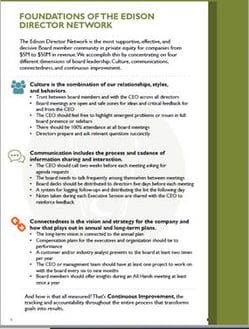Growth doesn’t just happen.
It takes preparation, planning and solid execution to build a business that not only reaches a nine-plus figure valuation but also stands the test of time. Often, that process is led not only by a visionary founder but by a board of directors that’s stacked with experienced executives who have been there before and know what levers to pull to unlock exponential growth. These are people who know how to scale great companies. They understand how process, people and experience can work together to drive growth. And they know how to translate their experience to help other entrepreneurs succeed.
That attitude is key because building a company is not a short-term project, but an ongoing effort that requires buy-in from everyone in the organization. According to a 2019 study by FCLTGlobal, companies that take a long-term view outperform their shorter-term focus competitors on financial metrics like revenues and profitability as well on nonfinancial metrics including job creation. To put that into perspective, the study found that over the most recent decade long-term focused companies on average grew revenues 47% more than their short-term peers, with 80% more profit and 35% more earnings growth.
A strong board can bring that kind of long-term and informed perspective to even the youngest, growth stage companies. But how are the most effective boards built? How do they run? How do they interact with their management teams? It all starts with the fundamentals.
Roles and Responsibilities
The fact is, no two boards are truly alike, just as no two companies are alike.
The needs and demands of a growth-stage company, for instance, are far different from the seed-stage, as are the requirements of private companies vs. public companies. Whatever the case, the roles and responsibilities of those on the board can vary based on stage, mission and strategic priorities and can include everything from providing overall strategy and guidance, to general governance, to performance oversight, to maintaining fiduciary control and more.
The key to bridging these gaps is in building alignment between the board and the company so that the organization as a whole is successful.
Doing that requires clarity on both sides. The company needs to fully understand where it is headed and what it will need to get there, while boards need to be clear on their role in the process and the direction the organization as a whole is moving. Not only why they are involved but what they can bring to the table to contribute to reaching these overall goals.
At Edison, we’ve found that strong boards have several characteristics in common. When helping our companies assemble the right group of mentors and advisors, we zero in on what we consider to be the four most important dimensions of high impact corporate boards: Culture, communications, connectedness and continuous improvement.
-
Culture: By reflecting directors’ management styles, behaviors and relationship, a strong board culture helps to build trust and encourage the frank, open exchange of ideas.
-
Communication: No board is an island, and open lines of communication between directors and corporate leadership ensures that the relationship is interactive and responsive to needs in real time.
-
Connectedness: The most effective boards understand the long-term vision of the company and work with leadership to put plans and processes in place to reach those goals.
-
Continuous Improvement: If it doesn’t get measured it doesn’t get done. Accountability to the board ensures that KPIs are met and annual planning turns into real results.
We call these the four Cs, and they form the foundation that strong leadership is built on and, in our experience, deliver the best results for growth stage companies.
Learn more about the Four Foundations of the Edison Directors Network here.



